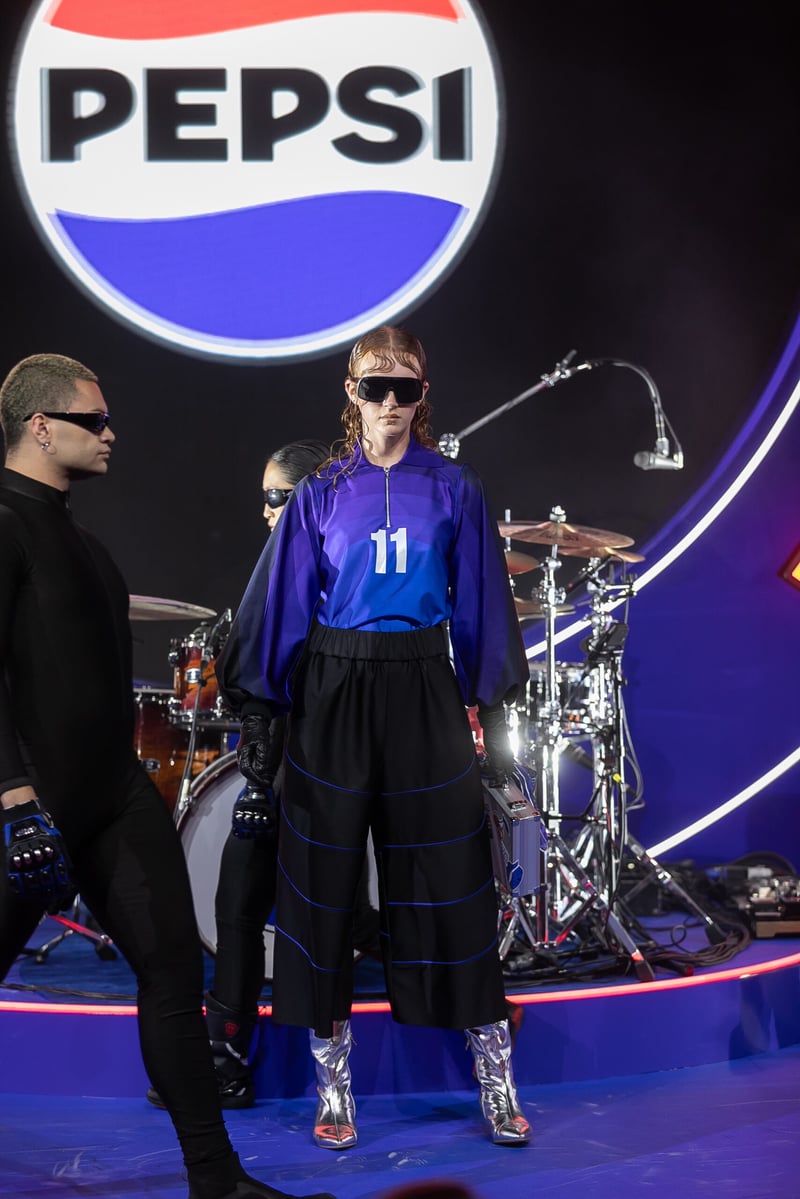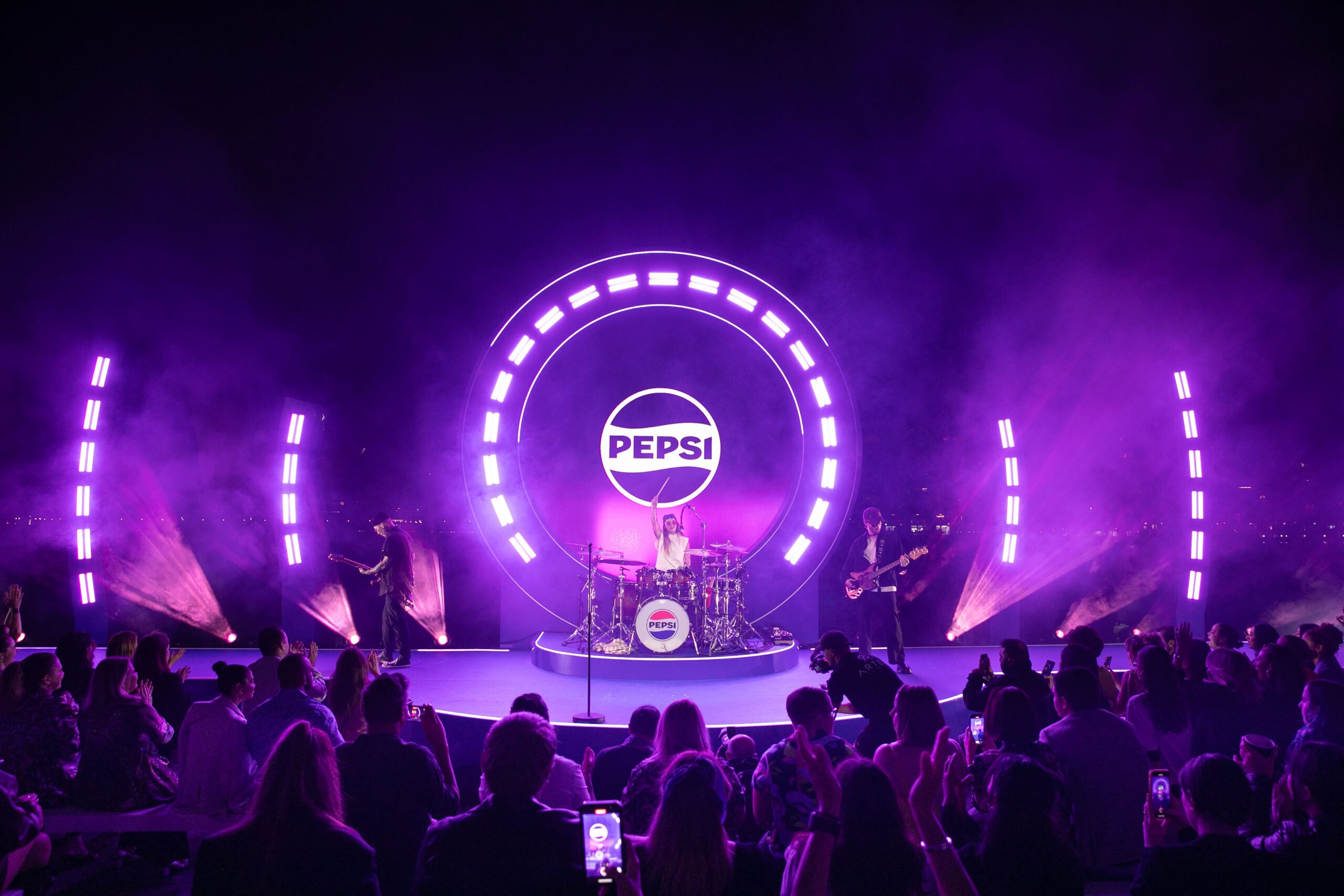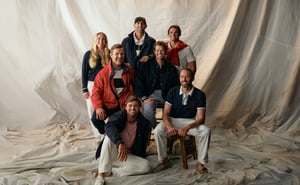This week, Pepsi — one of the world’s most iconic soft drinks — is set to unveil an exciting new electric-blue & black livery, reinvigorating its classic identity (as it has done several times over the past 60 years) for the next generation.
With its finger on the pulse of pop culture — who could forget the company’s ‘Gladiators’ TV spot of the mid-2000s? — the brand is consistently committed to quenching the public’s thirst for an iconic moment, all while challenging the status quo.
Unsurprising then that, last night, Pepsi debuted its new brand identity in creative partnership with Jackson Cowden: an up-and-coming talent who, according to Vogue, has innovated a new way of producing clothes by “harnessing virtual reality to see how they’ll exist in physical spaces.”

“Having just completed a full brand refresh,” said Cowden.
“Pepsi approached me two months ago with an idea to express its new motifs and identity in an unconventional way — using clothing silhouettes.”
RELATED: Pepsi Once Promised To Give Away A Fighter Jet
The Melbourne-based digital fashion artist’s practice, characterised by layered 3D visualisation and a rejection of minute-to-minute trends, is the foundation of the new ‘Pepsi Pulse Collection.’ A re-envisioning of various wardrobe staples, the range has been conceived by Cowden using an “AI first” approach.
Here, meticulous AI models are used to augment traditional techniques of fashion design — namely sketching, pattern making, and sampling of textiles — so that the final designs in the Pulse Collection, such as a zippered moto in Pepsi blue, could be completed in a record 40 days.
Jackson Cowden built the Pulse collection as a 10-piece unisex capsule; around, in his words, “the pulse idea, rather than just the pulse motif.” The aforementioned motosuit cribs, pretty self-evidently, from the lines of the new Pepsi logo; yet there are other pieces, like a three-tier shirt dress, that are informed by abstraction.
“We went in a more conceptual direction with that design,” he explained, “Attempting to capture the ‘pulse’ of Pepsi in a way which visually registers.”


By working at first instance in the digital realm, Cowden’s creative process has the potential to massively revolutionise the way young designers craft collections from scratch; and in the process, cut down on material waste.
Cowden continued: “The entire process — from pen-to-paper to final execution is digitally manipulated.”
“We’re using a new medium to get to a classic idea, and the reversal of the production pipeline (if I can call it that) has enabled us to get a little more conceptual — incorporating more world-building into the pieces.”
As if to underscore the intersectionality of Pepsi’s partnership with Jackson Cowden, the collection was unveiled in the guise of a full-blown runway show. Against the backdrop of Sydney Harbour, to a driving soundtrack played by G-Flip (another homegrown talent), the Pulse Collection crystalised the elusive sensation so many young creatives strive toward.
To paraphrase the great Wendy Williams: it’s music, it’s fashion, it is… the moment.












